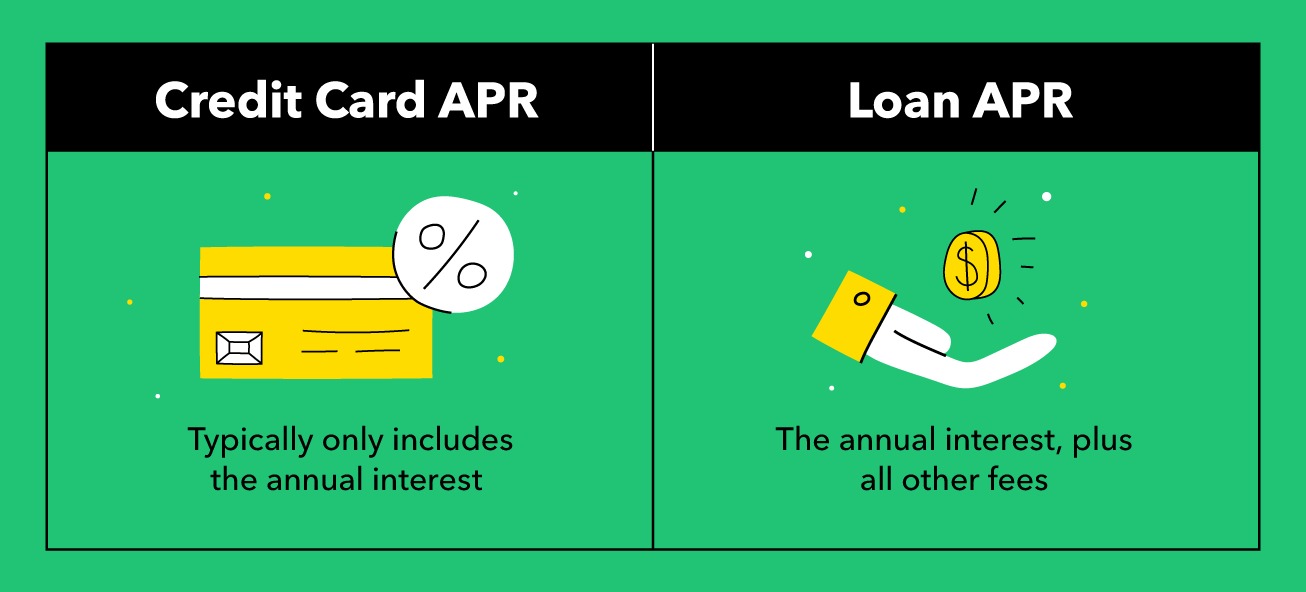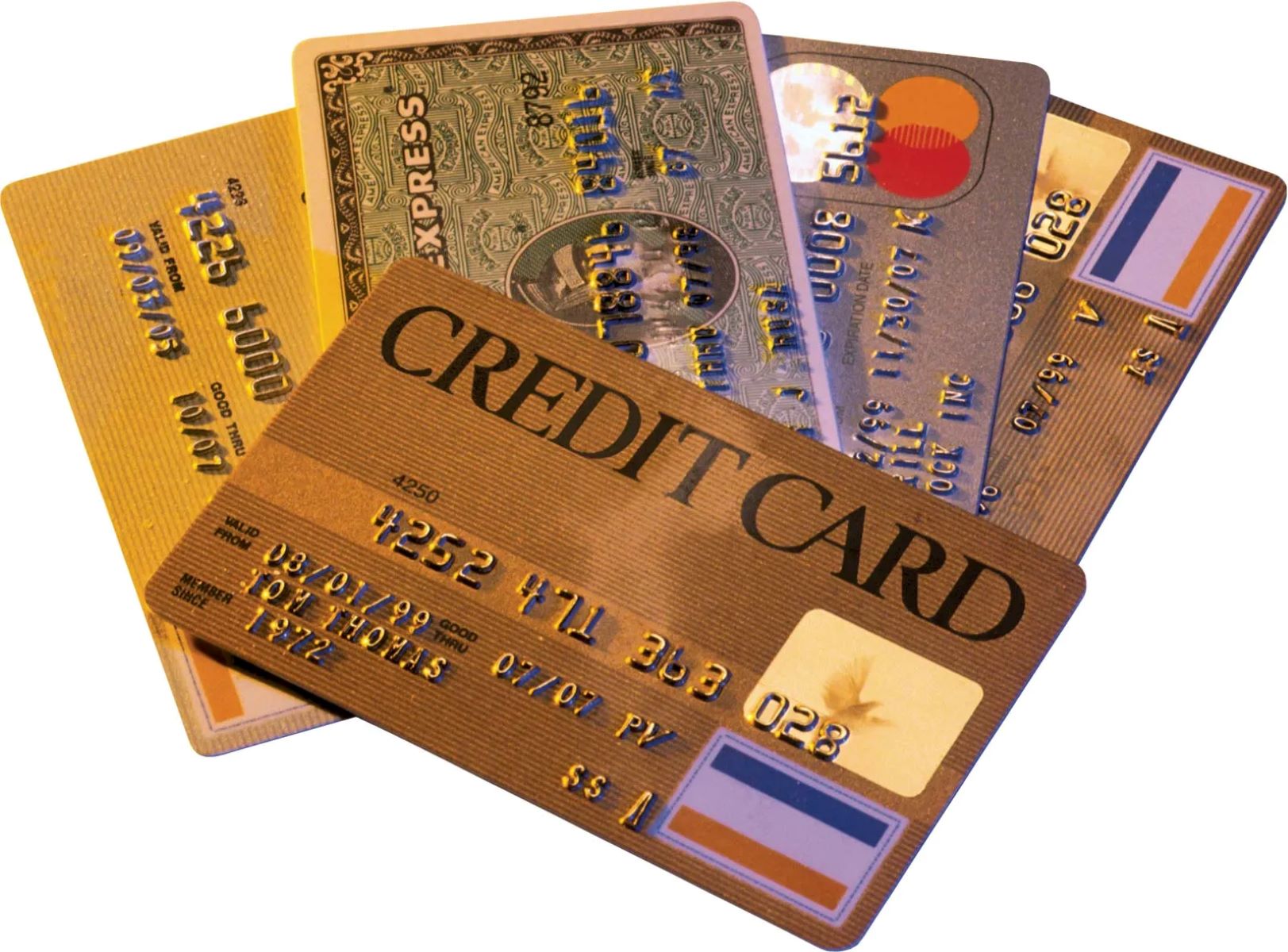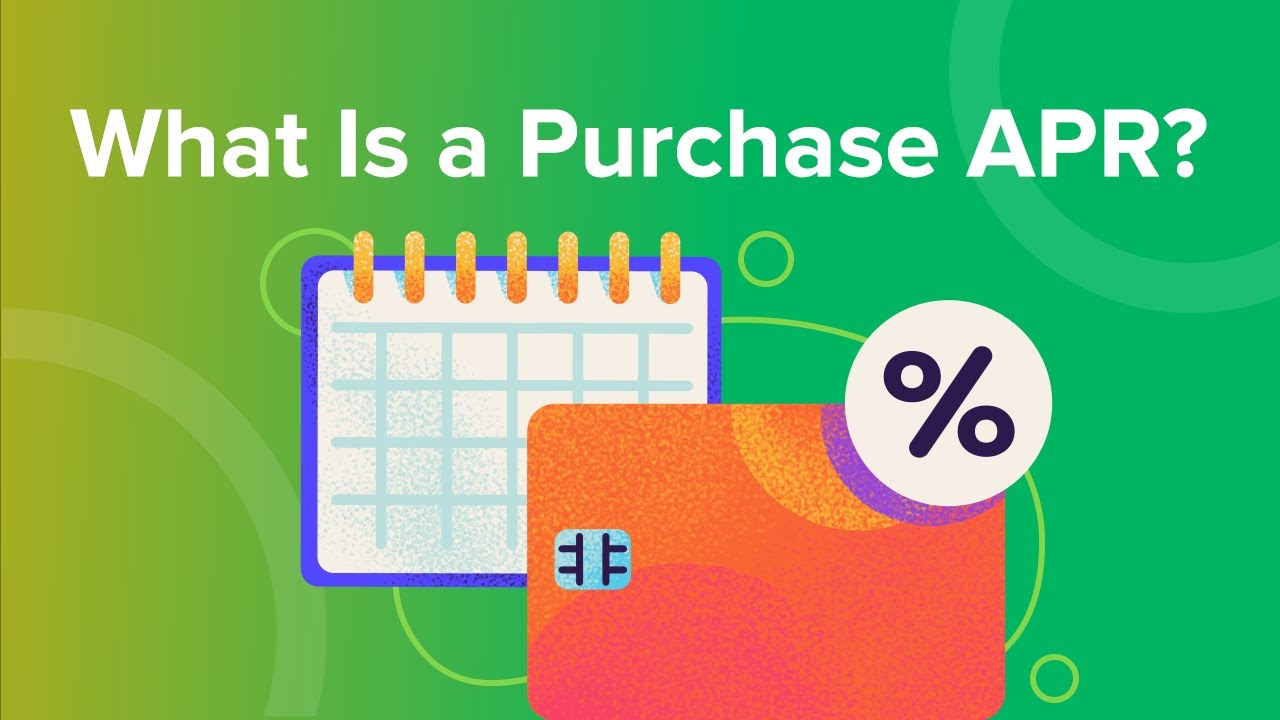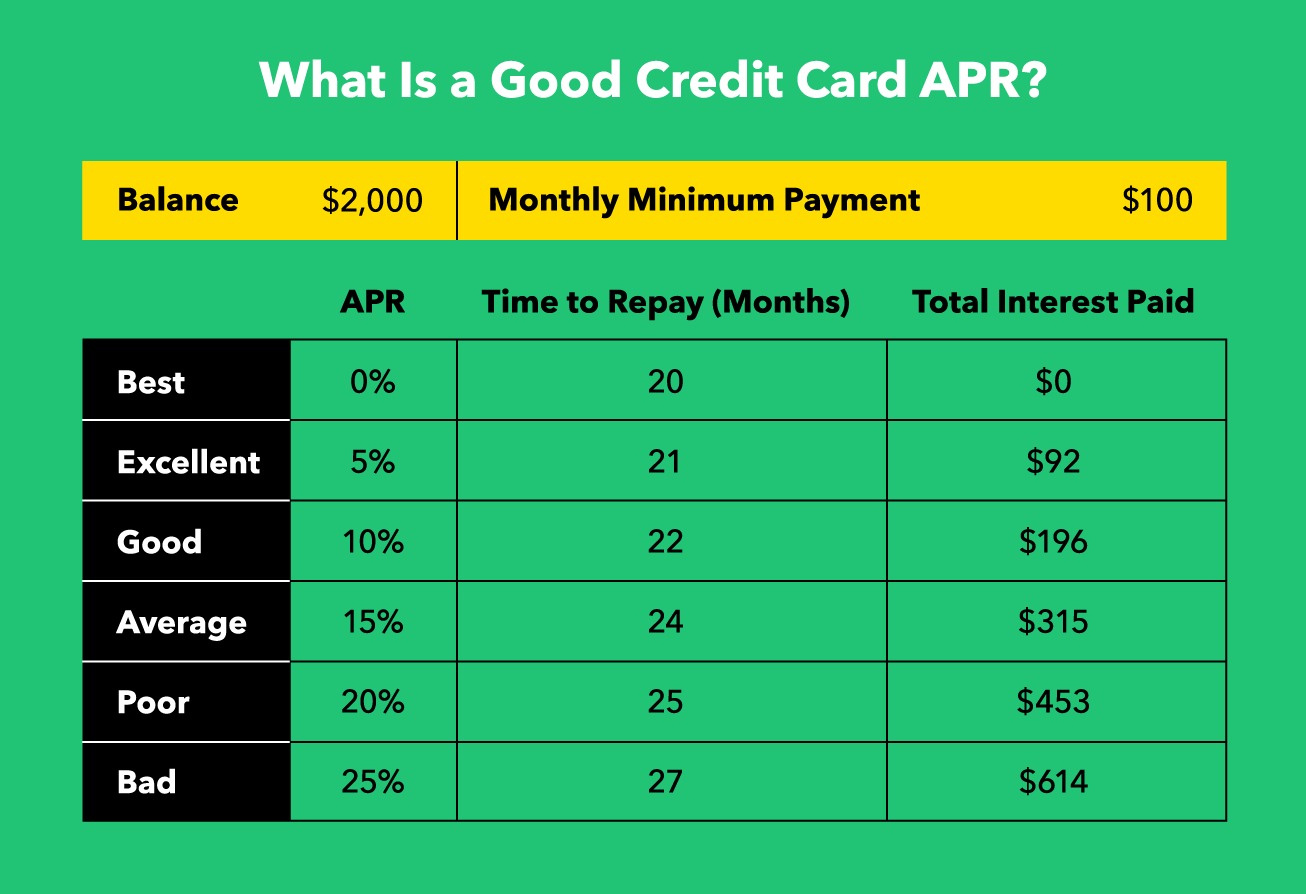Home>Finance>What Is Likely To Happen To The Interest Of A Credit Card With An Introductory APR?


Finance
What Is Likely To Happen To The Interest Of A Credit Card With An Introductory APR?
Published: October 26, 2023
Find out what happens to the interest on a credit card with an introductory APR, and how it affects your finances.
(Many of the links in this article redirect to a specific reviewed product. Your purchase of these products through affiliate links helps to generate commission for LiveWell, at no extra cost. Learn more)
Table of Contents
Introduction
In today’s fast-paced financial world, credit cards have become an essential tool for managing daily expenses and making larger purchases. One attractive feature many credit card companies offer is an introductory Annual Percentage Rate (APR) – a special interest rate that is lower or even 0% for a certain period of time. However, it’s important to understand what happens to the interest rate after the introductory period ends. Will it skyrocket? Will it stay the same? In this article, we will delve into the fascinating world of introductory APRs and explore what is likely to happen to the interest rate of a credit card after the introductory period.
An introductory APR is a promotional offer made by credit card companies to entice new customers. It serves as an incentive for individuals to apply for and start using their credit cards. During the introductory period, which is typically around 6 to 18 months, cardholders can enjoy a lower or even 0% interest rate on balance transfers, purchases, or both. This can be a significant cost-saving opportunity for individuals looking to pay down their existing debt or make big-ticket purchases while minimizing interest charges.
However, it’s important to note that an introductory APR is not a permanent feature of a credit card. Once the introductory period ends, the interest rate will usually revert to the standard variable APR, which can vary depending on market conditions and the individual’s creditworthiness. It’s crucial for credit card holders to understand the terms and conditions of the offer, including the duration of the introductory period and the interest rate adjustment that will occur after.
Overview of Introductory APR
When considering a credit card with an introductory APR, it’s important to have a clear understanding of what it entails. An introductory APR is a special interest rate offered by credit card companies to attract new customers. It allows cardholders to enjoy a reduced or 0% interest rate for a specific period of time, typically ranging from 6 to 18 months.
The purpose of an introductory APR is to incentivize individuals to apply for a particular credit card and start using it. This promotional offer can be especially attractive for those who want to consolidate their existing credit card debt or make large purchases without incurring high interest charges immediately.
The specific terms and conditions of the introductory APR will vary depending on the credit card issuer and the offer. Some cards may offer a 0% APR on balance transfers, purchases, or both, while others may provide a lower interest rate compared to the standard APR.
One important thing to note is that the introductory APR is not a permanent feature of the credit card. It is a limited-time offer that typically expires after the specified introductory period ends. After that, the interest rate will adjust to the standard variable APR, which is based on market conditions and the individual’s creditworthiness.
Credit card holders should carefully review the terms and conditions of the introductory APR offer, including the duration of the promotional period, any restrictions or fees associated with transferring balances, and the interest rate adjustment that will take effect once the introductory period ends.
Understanding the overview of an introductory APR is essential for credit card users to make informed decisions about their financial management. It allows individuals to take advantage of the benefits of a lower interest rate for a specific period, while also being prepared for any changes or adjustments that may occur afterward.
Understanding How Introductory APRs Work
Introductory APRs can seem like a great deal, but it’s crucial to understand how they work to make the most of this promotional offer. Here’s a breakdown of how introductory APRs function:
1. Offer Details: When you come across a credit card with an introductory APR, review the offer details carefully. Take note of the duration of the promotional period, whether it applies to balance transfers, purchases, or both, and any fees associated with the offer. This information will help you determine if the offer aligns with your financial needs and goals.
2. No or Low Interest: During the introductory period, you will benefit from either a significantly reduced interest rate or a 0% interest rate. This means that any balances you carry over from month to month or new purchases you make will incur little to no interest charges.
3. Payment Allocation: When you make payments to your credit card issuer, they generally allocate the payment first towards any accrued interest charges. Only after the interest is paid off do they apply the remaining amount towards the principal balance. However, during the introductory period, your payments may be applied entirely towards the principal balance. This can help you pay down your debt faster.
4. Expiration: After the promotional period ends, the interest rate will revert to the standard variable APR. This can lead to a significant increase in the cost of carrying a balance on your credit card. Therefore, it’s crucial to have a plan in place to manage your credit card balance and budget accordingly.
5. Impact on Credit Score: Applying for a credit card with an introductory APR may result in a temporary dip in your credit score due to the credit inquiry. However, consistently making on-time payments and managing your credit responsibly can help positively impact your credit score over time.
Understanding how introductory APRs work allows you to make informed decisions about which credit card offers are the most beneficial for your financial situation. By taking advantage of the promotional period and utilizing smart financial management techniques, you can maximize the benefits of an introductory APR and minimize the potential pitfalls.
What Happens to the Interest Rate After the Introductory Period
After the introductory period ends, it’s essential to know what happens to the interest rate on your credit card. Typically, the interest rate will increase and revert to the standard variable APR. Here are some key points to consider:
1. Interest Rate Adjustment: The interest rate on your credit card will adjust to the standard variable APR as determined by the credit card issuer. This rate is often based on factors such as the prime rate and your creditworthiness. It’s important to review the credit card terms and conditions to understand how the interest rate is calculated and any potential changes.
2. Potential Rate Increase: In many cases, the interest rate after the introductory period will be higher than the promotional rate. This means that the cost of carrying a balance on your credit card will increase, resulting in more interest charges being applied to your outstanding balance.
3. Variable Rates: Some credit cards have variable interest rates, which means that the APR can fluctuate based on changes in the market. These variations can be due to changes in the prime rate or other market factors. It’s important to be aware of these potential rate fluctuations and their impact on your credit card’s interest charges.
4. Minimum Payment Calculation: Once the introductory period ends, the minimum payment calculation may change. The credit card issuer will likely factor in the higher interest rate when determining the minimum payment required each month. This can result in a larger minimum payment amount, which may affect your monthly budgeting.
5. Impact on Balances: If you have an outstanding balance on your credit card after the introductory period, the higher interest rate will lead to more interest charges being added to your balance each month. This can make it more challenging to pay off your debt, especially if you only make minimum monthly payments.
It’s crucial to plan ahead and be prepared for the increase in the interest rate after the introductory period ends. Consider your financial situation and budget to ensure you can afford the higher interest charges. If necessary, explore options such as transferring your balance to another credit card with a lower APR or implementing a debt repayment strategy to minimize the impact of the increased interest rate.
Factors That Can Affect the Interest Rate
The interest rate on a credit card after the introductory period can be influenced by various factors. Understanding these factors can help you anticipate and navigate potential changes to your interest rate. Here are some key factors that can affect the interest rate on your credit card:
1. Creditworthiness: Your creditworthiness plays a significant role in determining the interest rate you will receive. Credit card issuers assess your credit score, payment history, and overall credit profile to gauge your creditworthiness. Those with higher credit scores and a strong credit history generally qualify for lower interest rates compared to individuals with lower scores or a less favorable credit history.
2. Market Conditions: The interest rate on your credit card, particularly for variable APRs, can be influenced by market conditions. This includes changes in the prime rate, which serves as a baseline for many credit card APRs. If the prime rate increases, it could result in a higher interest rate on your credit card. Keeping track of market trends and economic indicators can help you anticipate potential interest rate adjustments.
3. Payment History: Your payment history with the credit card issuer can impact your interest rate. Consistent on-time payments and responsible credit card usage can demonstrate your reliability as a borrower, which may lead to a lower interest rate. On the other hand, late payments or defaults can adversely affect your creditworthiness and potentially result in a higher interest rate.
4. Cardholder Behavior: The way you use your credit card can also affect your interest rate. For example, maxing out your credit card or consistently carrying a high balance can signal higher risk to credit card issuers. On the other hand, demonstrating responsible credit utilization, such as keeping balances low relative to your credit limit, can contribute to a lower interest rate.
5. Relationship with the Issuer: Maintaining a long-standing relationship with a credit card issuer can sometimes have benefits. Some issuers offer preferential interest rates for loyal customers who have a history of on-time payments and responsible credit card usage. It’s worth exploring if your issuer provides any special perks or loyalty programs that could potentially lower your interest rate.
Keep in mind that these factors can interact with each other, and the weight assigned to each factor may vary among credit card issuers. It’s important to remember that you have some degree of control over these factors. By practicing good credit habits, managing your credit responsibly, and maintaining a positive credit history, you can potentially improve your creditworthiness and increase the likelihood of securing a favorable interest rate.
Impact on the Credit Card Holder
The change in the interest rate on a credit card after the introductory period can have a significant impact on the credit card holder. Here are some key ways in which the interest rate change can affect you:
1. Increased Interest Charges: The most immediate impact of a higher interest rate is the increase in interest charges on your credit card balance. This means that carrying a balance on your credit card will cost you more in interest payments each month, potentially leading to higher overall debt if not managed effectively.
2. Longer Debt Repayment: With higher interest charges, it can take longer to pay off your credit card debt. If you only make minimum payments, a larger portion of your payment goes towards interest rather than reducing the principal balance. This can extend the time needed to clear your debt and result in more interest expenses over time.
3. Financial Strain: Increased interest charges can put a strain on your finances, especially if you were accustomed to the lower or 0% interest rate during the introductory period. Higher interest payments may reduce your available funds for other financial goals or necessitate adjustments in your budget to accommodate the additional expense.
4. Credit Score Impact: Failing to manage the higher interest rate effectively can also affect your credit score. If the increased payment burden leads to missed or late payments, it could result in a negative impact on your credit history and lower your credit score. This, in turn, can make it more challenging to obtain favorable interest rates on future credit applications.
5. Debt Accumulation: For individuals who continue to make new purchases on their credit card after the introductory period, the higher interest rate can lead to a faster accumulation of debt. It’s important to be mindful of your spending habits and avoid carrying balances that you cannot afford to pay off in a timely manner.
It’s crucial to be proactive in managing the impact of a higher interest rate on your credit card. Consider strategies such as paying more than the minimum payment, exploring balance transfer options to lower APRs, or consolidating debt to reduce overall interest expenses. Budgeting effectively and being disciplined in your financial habits can help mitigate the negative effects of the interest rate change.
Ways to Manage the Interest Rate after the Introductory Period
While the increase in the interest rate after the introductory period may seem daunting, there are several effective strategies you can employ to manage the interest rate on your credit card. Here are some ways to navigate the post-introductory period and minimize the impact on your finances:
1. Pay More than the Minimum: Making only the minimum payment each month can prolong the repayment period and result in higher interest charges. Instead, strive to pay more than the minimum amount due. By doing so, you can expedite debt repayment and reduce the overall interest you’ll pay over time.
2. Consider Balance Transfers: Explore the option of transferring your credit card balance to a card with a lower interest rate or a promotional balance transfer offer. This can help you save on interest charges and potentially pay off your debt faster. However, be mindful of any balance transfer fees and the terms and conditions of the new credit card.
3. Negotiate with the Credit Card Issuer: Contact your credit card issuer to discuss potential options for lowering your interest rate. In some cases, they may be willing to negotiate a lower rate, especially if you have a good payment history or have been a long-standing customer. It never hurts to ask, and the outcome could be in your favor.
4. Make Timely Payments: Ensure that you make all credit card payments on time to avoid any late payment fees and potential negative impacts on your credit score. A consistent track record of on-time payments can help build a positive payment history and potentially improve your credit standing, which may lead to better interest rates over time.
5. Budget and Prioritize Repayment: Review your budget to identify areas where you can reduce expenses and allocate more funds towards debt repayment. Consider adjusting your spending habits and prioritizing debt reduction to tackle your credit card balance more aggressively. This focused approach can help you pay off the debt faster and save on interest charges.
6. Monitor Credit Card Offers: Keep an eye on credit card offers and promotions from other issuers. If you come across a card with a lower interest rate or a favorable balance transfer offer, it may be worth considering a switch. However, carefully evaluate the terms and conditions, including any fees associated with the new card, before making a decision.
By implementing these strategies, you can effectively manage the interest rate on your credit card after the introductory period. Remember to review your financial situation regularly, stay disciplined in your debt repayment efforts, and make informed decisions based on your individual needs and goals.
Conclusion
Understanding what happens to the interest rate of a credit card after the introductory period is crucial for responsible financial management. While an introductory APR can offer temporary benefits such as lower or 0% interest rates, it’s important to be prepared for the potential increase in interest charges once the promotional period ends.
After the introductory period, the interest rate on your credit card will generally revert to the standard variable APR. This could result in higher interest charges, longer debt repayment periods, and potential financial strain. However, there are proactive steps you can take to manage the interest rate effectively.
By paying more than the minimum payment, considering balance transfers, negotiating with your credit card issuer, and prioritizing timely payments, you can mitigate the impact of the increased interest rate. Additionally, monitoring credit card offers and budgeting wisely can help you navigate the post-introductory period and reduce the overall cost of carrying a balance on your credit card.
Remember, responsible credit card usage involves prudent financial decision-making and debt management. Regularly reviewing your credit card terms and conditions, understanding the factors that can affect the interest rate, and being proactive in managing your debt can lead to better financial outcomes and increased peace of mind.
Ultimately, by staying informed and adopting effective strategies, you can effectively navigate the interest rate changes after the introductory period and maintain control over your financial well-being.














